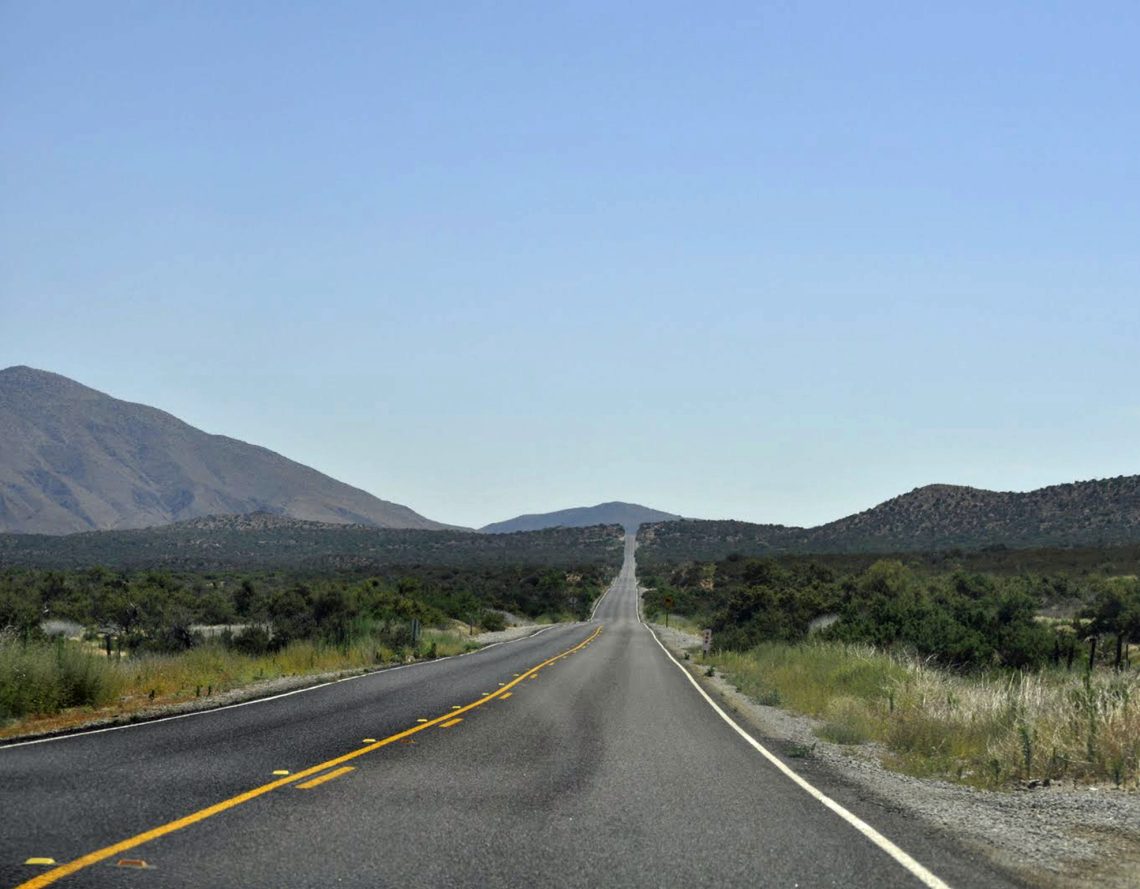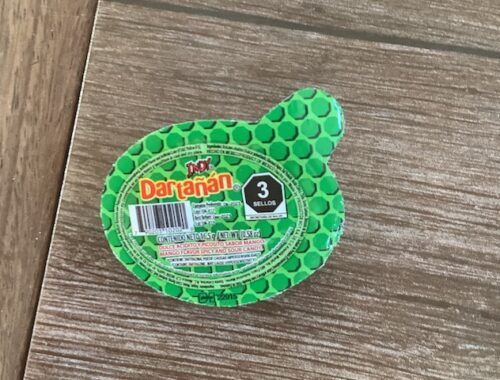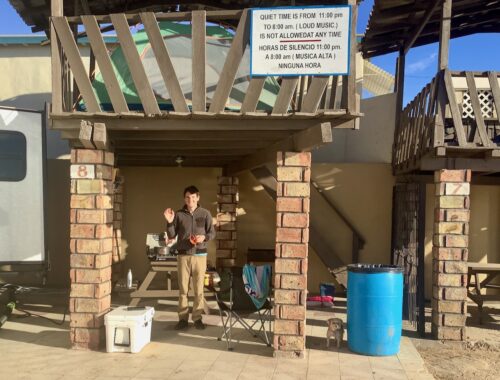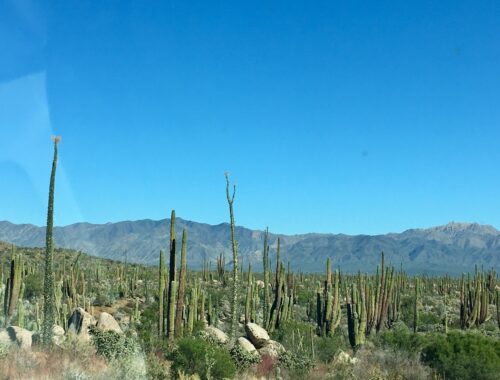
Manejar la coche…
Don’t try to understand it; feel it.
The above is a quote from Christopher’ Nolan’s 2020 film, Tenet, and is, I think, an appropriate maxim to apply to driving in Mexico. No, it’s not lawless and psychotic. There are rules and signs and a general attempt at order… Much is familar to a seasoned driver; other parts are rather more scary. If you have more international driving experience than me, you may not need this primer. I know there are zanier places in the word. But if you don’t often stray from the resort zones, there are certainly things to be aware of. The number one rule (and I’ll say it again): keep right. After that, much depends on vibes.
Nothing I (or anyone) can write down will capture it all – experiences will vary – but I feel I’ve survived enough to have earned the right to several observations. More than that, I’ve found information in various other place online to be woefully non-specific, amounting to little more than to “take care.” There are 100+ blogs on the 15 top things to do in Puerta Vallarta (all copying from each other) but few authors able to lay down a few of the realities of driving through the country. Nothing wrong with setting expectations… so here are the main ‘themes’ of Mexican highways.
Madness and Methods
As I said above – don’t worry, it’s never complete chaos. The roads, in theory, follow the usual laws. However, sometimes despite the rules a dash of madness becomes part of the deal. Overwhelmed roundabouts are common. So too are multi-lane roads without any lane markings. In these moments, you’ll need to go with the flow, follow the car in front of you, and put a little faith in the dance. The more exposure you get to these ‘loose’ moments, the more you begin to see the hidden logic the other drivers are all obeying. It’s easy to throw up your hands and curse the lack of order. Or you can embrace the flexible nature of things and find your way through an amazing country by car.
This isn’t a glib way for me to say, it’s easy, or get over your reservations. It’s still challenging, even after three months of it. It’s a way for me to say that you’ll still be following basic driving conventions, with the looseness dial turned way up. You don’t need to go full-Mad Max, but you may need to get your toes wet.
Yield to the Centerline aka the Bonus Lane aka Creative Problem Solving
Remember, keep right – waaaay right.
You will quickly find that vehicles here are going all sorts of different speeds. From definitely too fast to dangerously too slow. There are motorbikes, tractors, carts, old busses, heavy dump trucks that are poorly equipped to go the posted speed limit. Others seem unaware that there is a limit. The convention is to stay right to let others pass. Pretty standard if you have two lanes in the same direction. Less sowith single-lane highways (i.e. most of them). No problem, say the locals.
The single most important thing to be ready for is traffic hugging the right. Now, you might say, there’s no lane there – only the shoulder! Yes. You should be straddling the white line for general travel. It will look and feel strange, but with everyone doing this, it becomes the safer option. Why? Well, there is a lot of slow traffic and many slow highways… patience can be hard to come by.
The reason is to facilitate easier passing from both directions. With cars hugging the right, the center becomes a kind of neutral, two-way passing lane. In other words, stray too far to the left (i.e. our idea of driving normally) and you may find another car barrelling towards you right down the center of the road. The middle is not a place to linger at high speeds, but when using these techniques when driving through towns you have more lattitude for strategic overtaking.
You’ll quickly find your tolerance for passing other vehicles this way (you need to cross the centerline and trust the process). No need to put yourself or others at risk, but you’ll get the hang of it. Which brings us to…
The Power of Effective Communication
Get to know where your 4-way flashers are. You will be using them more in a week than you have likely done in your life. And it makes sense! We should all use them more, but that’s a topic for another day.
Reasons your emergency flashers may be deployed:
- You are moving particulary slowly and want to be overtaken (very helpful when a slow moving semi-trailer flashes you to let you know that it’s safe to pass).
- You are moving particularly fast and want to overtake.
- You are coming up to a hazard (like construction, congestion, toll booth) and don’t want the vehicle behind to slam into you (like, I know you see my brake lights, but I’m going to do this as well so that you know I’m serious).
- You decide to stop somewhere that isn’t really a stop.
- You like to drive this way.
It really does make a difference, so don’t be shy. Slowing down? Flashers on.
A pothole can ruin your day, a tope can ruin your car
Some people have asked me about the quality of roads in Mexico. Are they paved? Usually. Are they bumpy? At times. Lined and well marked…? Maybe. There are many fine roads and many poor ones too. Don’t drive at night is another rule to throw in here for a host of good reasons. But the real issue with Mexico’s roads is the destructive potential and generous deployment of speed bumps.
You may think that you know speed bumps. Used in parking lots or quiet neighbourhoods, they are an effective means of traffic calming. But did you know that they can also be placed seemingly at random on highways? Perhaps even unmarked…?
The Mexican speed-bump (a tope [TOE-pay]) is a very special thing. You can’t fault the intention of their use. As alluded to above, while speed limits are posted, some (most) drivers find it ‘difficult’ to adhere to these sorts of definitive rules. With many highways cutting through the center of towns big and small additional speed deterents are required. On the outskirts of every teeny village in the country, a series of bumps are laid out forcing you to come down to dead slow. Safety first.
These are not your usual bumps. I cannot stress this enough. Most are painted and signed. Some are not. Some are unofficial, thrown down by the locals to reinforce whatever the state offered. There’s never just one. Many are steep and wide and at risk of bottoming out low cars. They do their job; pay them respect and keep your eyes peeled. And don’t drive in the dark.
There are more items to be aware of for certain. Lots of region specific or even highway specific ‘nice-to-knows.’ Left turns, roundabouts, various signs… I may add these to the list above or create a second volume. But these are, I think, the ones you most need to know. After that… just feel it.
*Cover photo attribution to Heather Paul (warrior woman)

At Home in the Yucatan

Heading for Home
You May Also Like

Are surprises always good? Sarah’s reviews!
December 27, 2022
RIP Camping
January 20, 2023